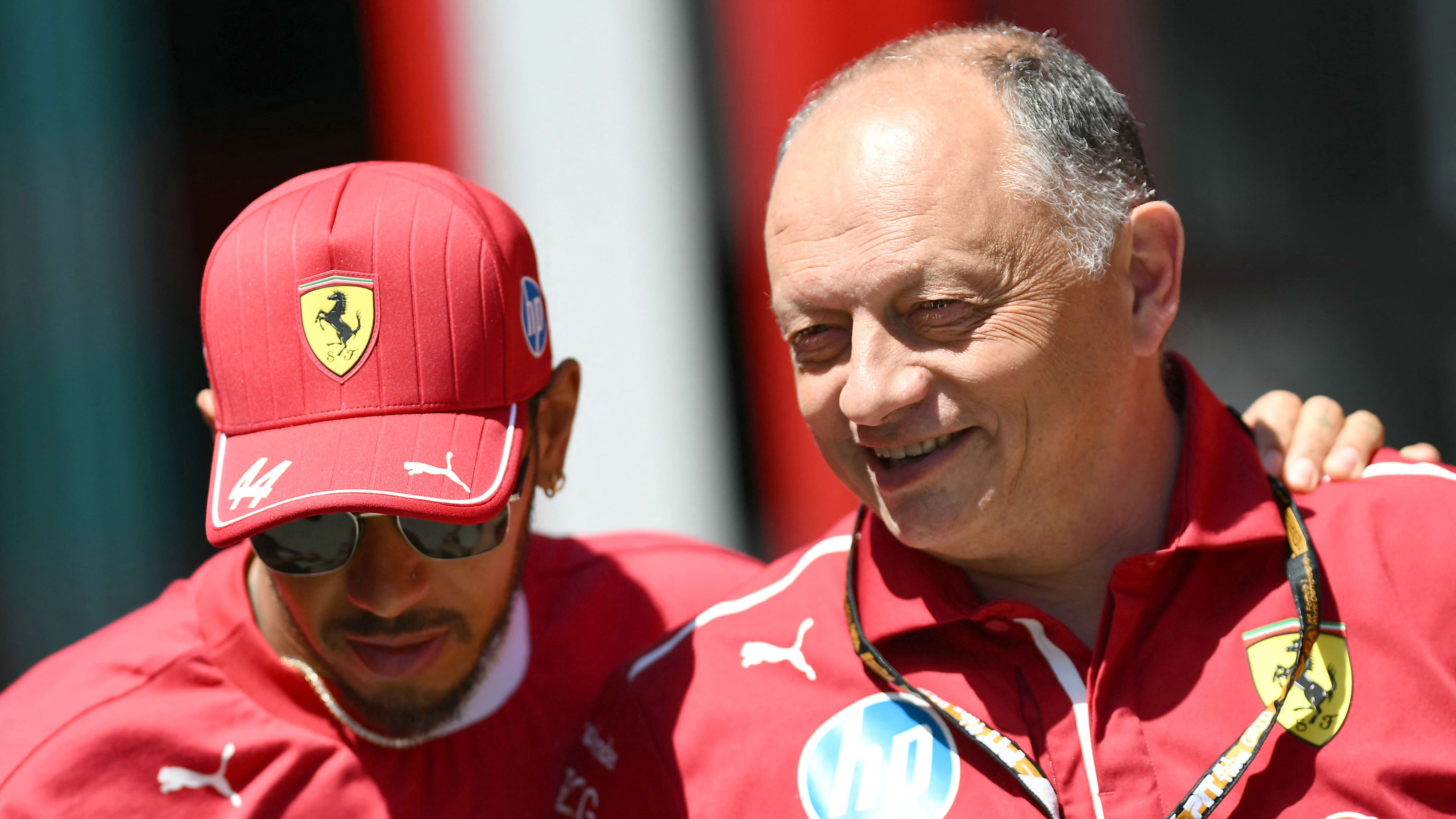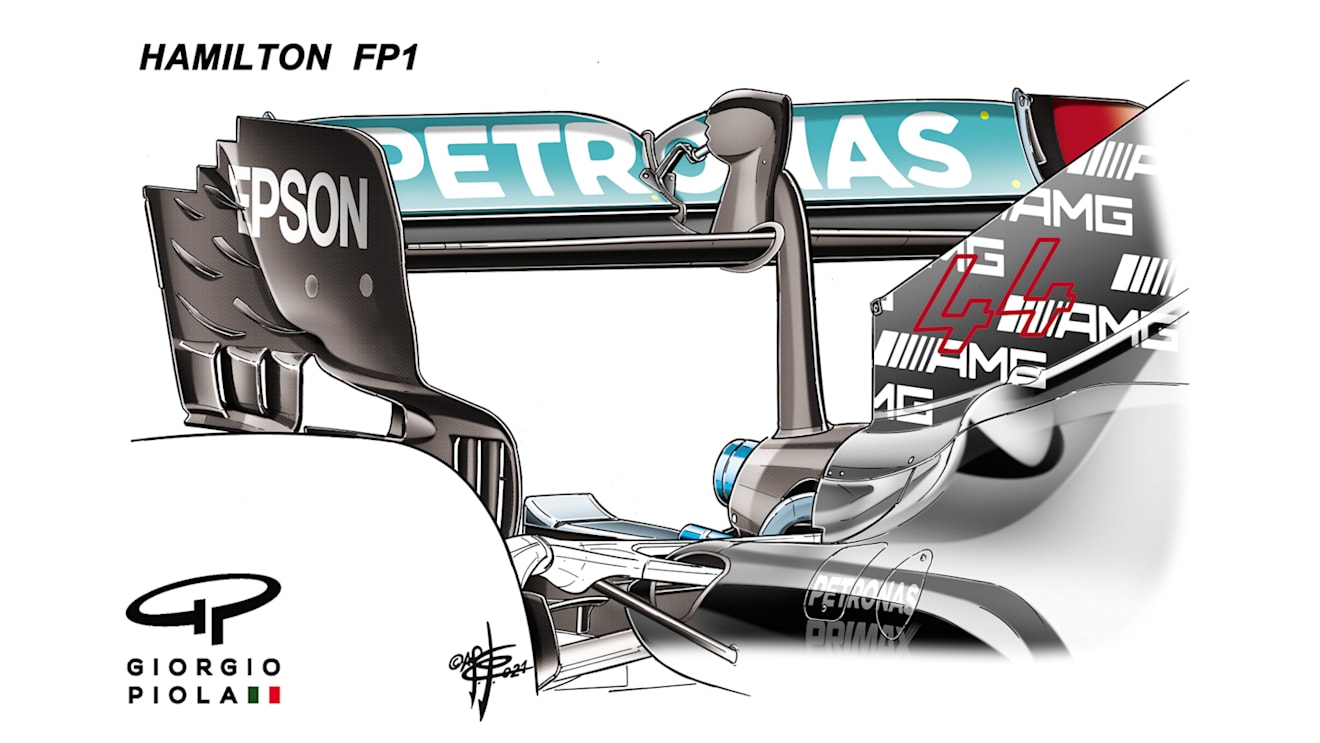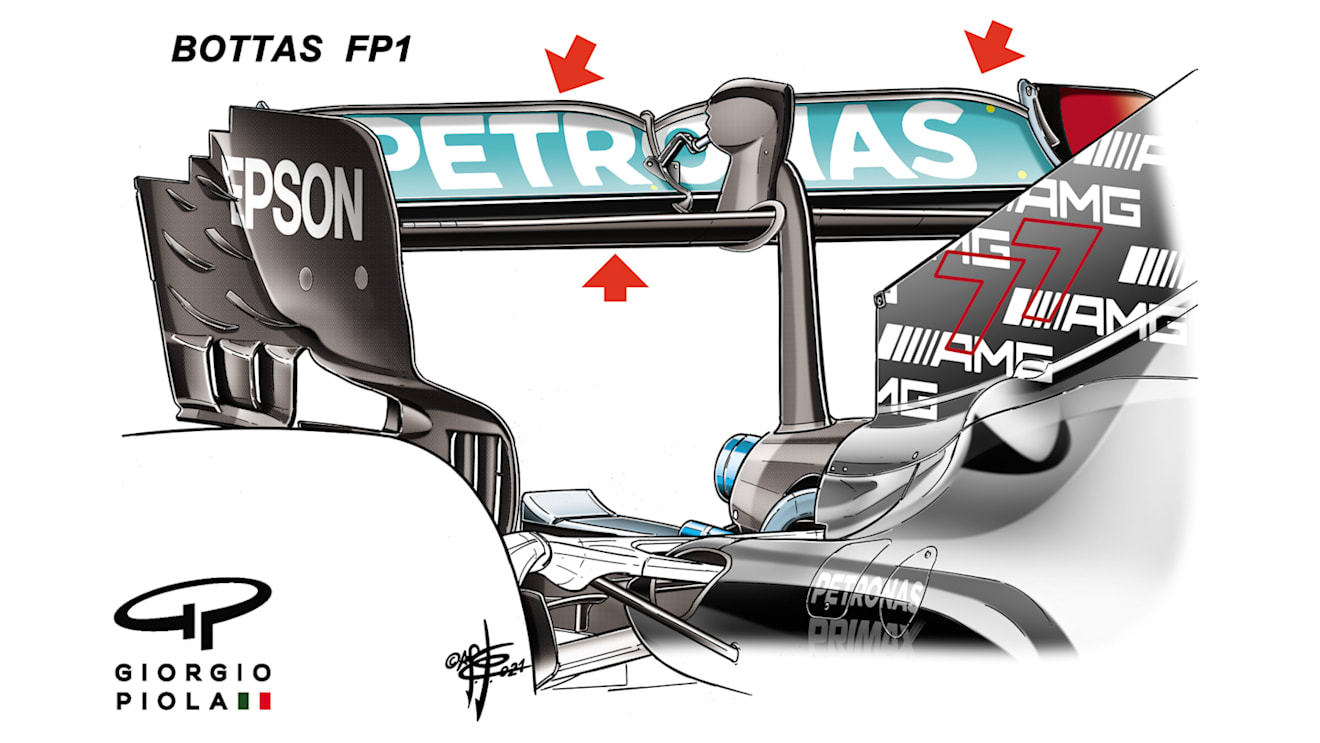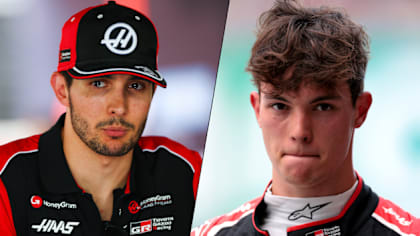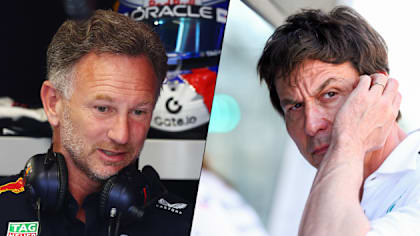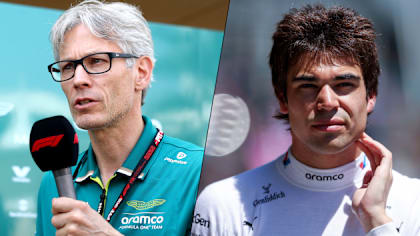
Technical
Winging it – how Mercedes and Red Bull drastically changed their set-ups throughout the Belgian GP weekend

Share

Even though the Belgian Grand Prix was hit hard by rain, there was still a lot to glean from Mercedes and Red Bull's set-up choices in the lead up to Sunday. Mark Hughes examines how the teams adapted through the weekend, with technical illustrations from Giorgio Piola.
The weather-induced curtailment of the Belgian Grand Prix on Sunday prevented us seeing how the various wing level choices made by the teams were going to play out.
As we highlighted here last week, the Spa-Francorchamps circuit provides many feasible levels of downforce which will vary in their effectiveness between qualifying and race, between attacking or defending – and between wet and dry.
In the battle between the title contenders Mercedes and Red Bull-Honda, a fascinating game of cat and mouse appeared to be unfolding in the practices and qualifying as they each sought out what for them was going to be the most likely route to victory, given all those variables and, crucially, how each thought the other might choose.
READ MORE: 6 Winners and 5 Losers from the Belgian GP weekend – Who shone in the rain at Spa?
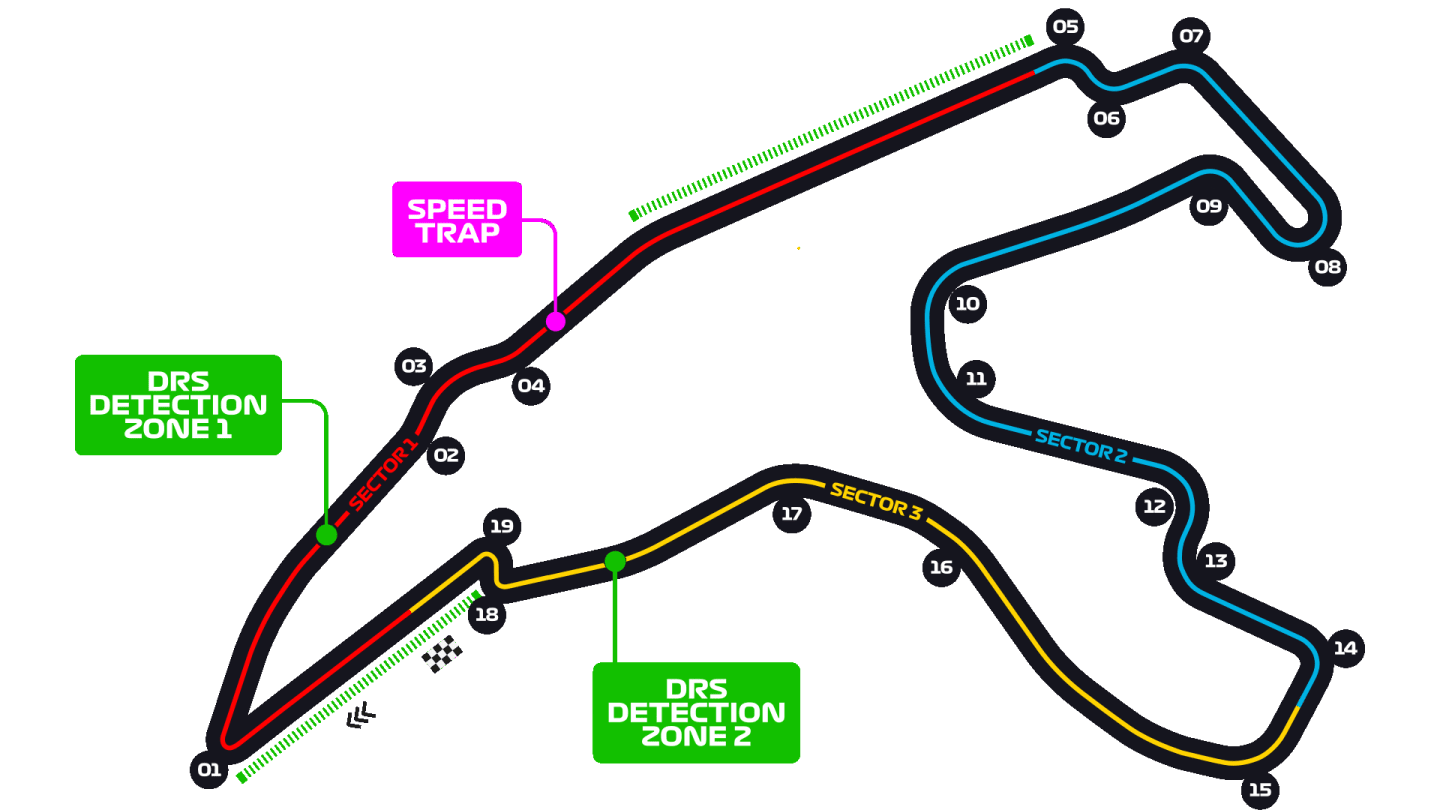
The 7km Spa-Francorchamps circuit and its three sectors provide a set-up dilemma to teams
The long flat-out sections of sectors 1 and 3 (above) are a natural good fit for the Mercedes concept in that such a low-rake car is naturally less drag-inducing than a high-rake car such as the Red Bull. So for equivalent wing levels and power, the Mercedes will create less drag and be faster at the end of the straights than the Red Bull. But the Red Bull’s more angled underfloor should allow it to create more downforce for the equivalent wing level, which would pay back in the curves of the middle sector.
Working out what would be the equivalent wing levels between two very different wing designs and the different angles at which they present to the air (because of the car concepts) is not a straightforward matter and certainly couldn’t be accurately assessed just by visually comparing main plane areas and flap angles.
Power struggle: How Honda caught up with Mercedes – and how the Silver Arrows fought back
But within the family of wing designs that each team brought, both teams were doing back-to-back comparisons between high and low downforce – or, more accurately, between low and very low.
Red Bull’s car concept is naturally disadvantaged at a circuit such as Spa where low drag is rewarded more than at most tracks and downforce less so. Because even with a low wing setting, the car is still naturally quite draggy. Red Bull cannot, in other words, really shed enough drag for Spa even when they use the smallest of rear wings. In comparison to Mercedes, at least.
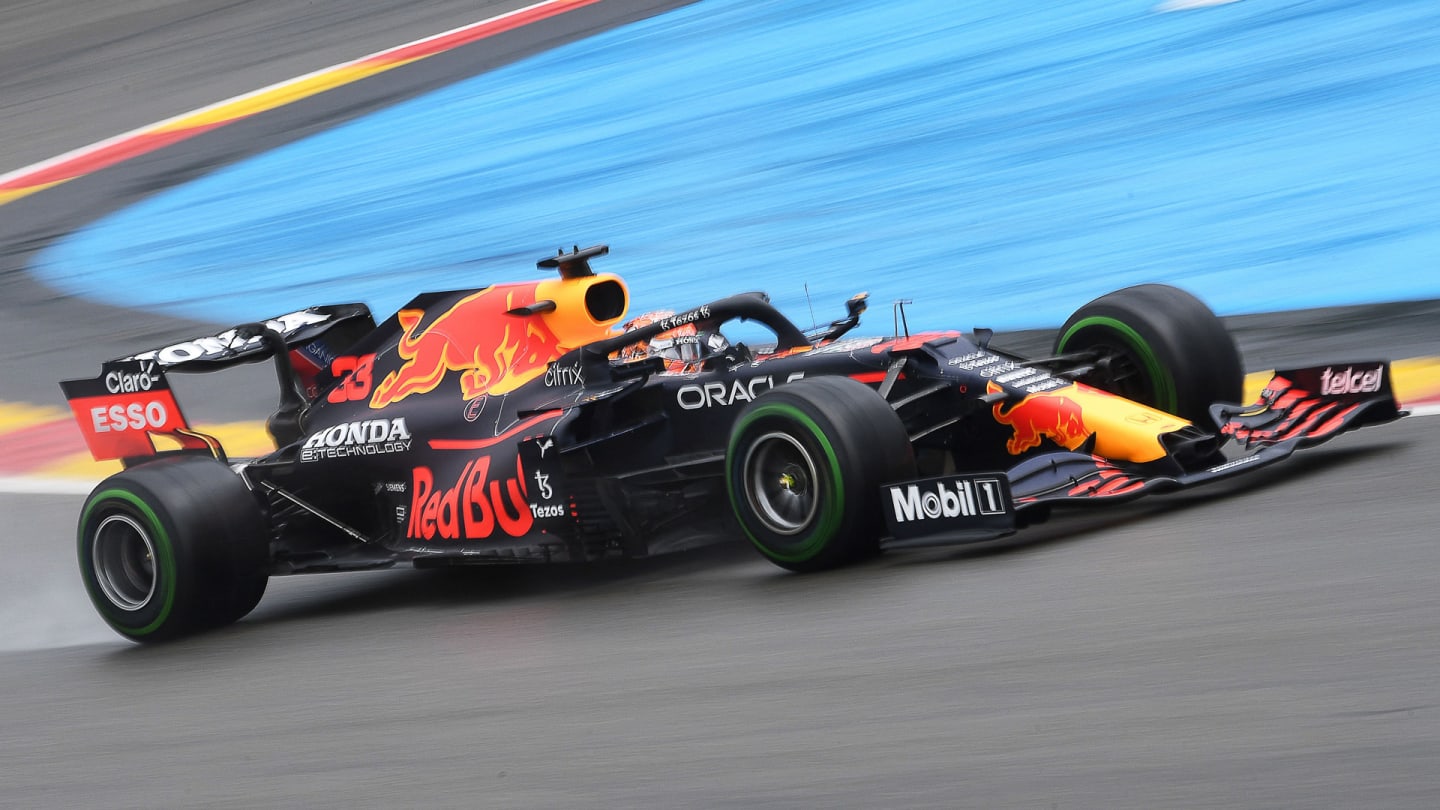
Red Bull ran the slimmest of wings in FP3
That defined the ranges of rear wing each brought. The Mercedes wings were of a quite conventional design, with more main plane area than the Red Bull’s spoon-shaped profiles.
With their low-rake concept, Mercedes felt that varying the flap angle of this wing would be enough to give them the required range of options, as the car induces less drag than the Red Bull and so the wing could be used to give adequate downforce without being as punishing on the straights as the same size wing would be on a high-rake car.
TECH TUESDAY: The most ingenious solutions to the 2021 rules changes we’ve seen so far
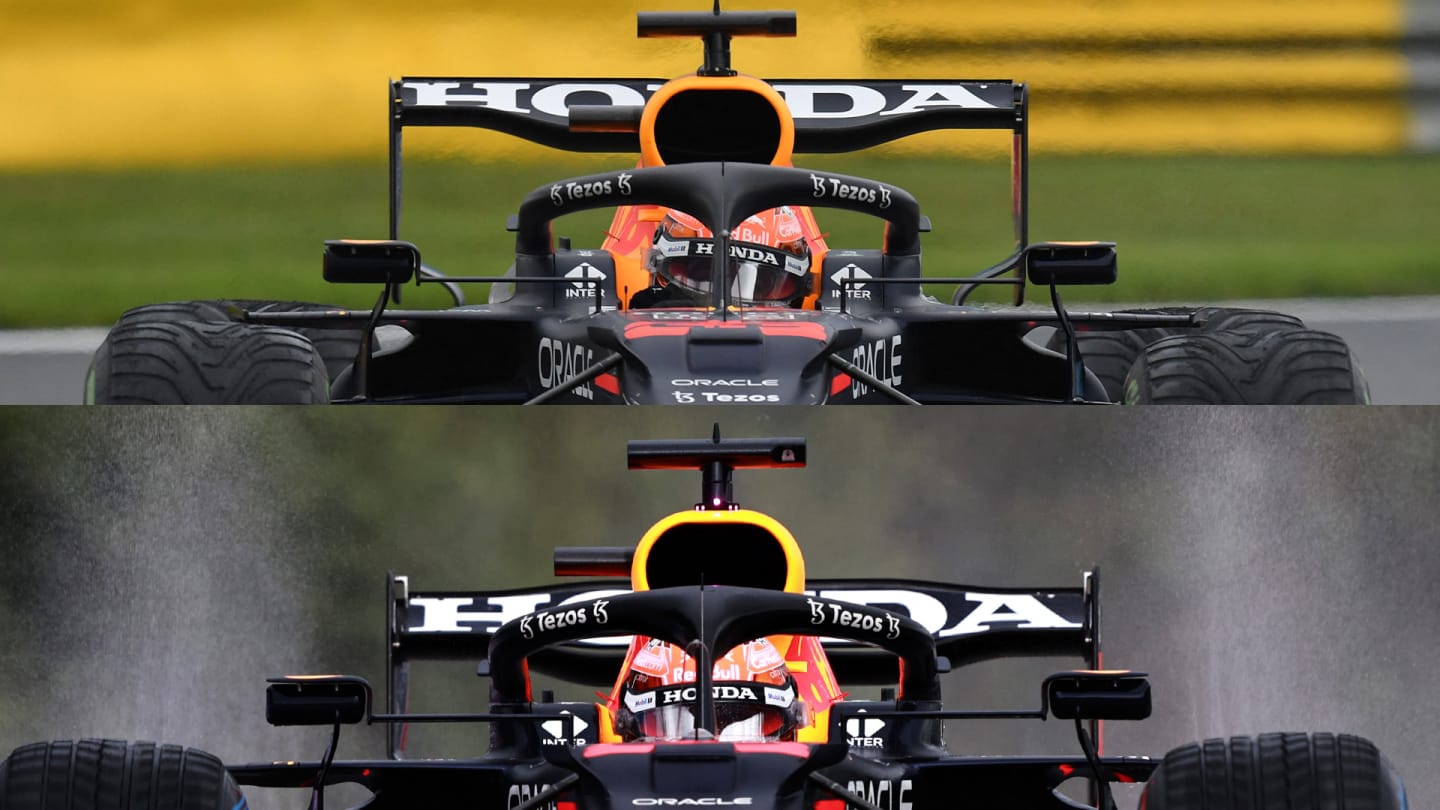
Top is the lowest downforce of Red Bull’s Spa spoon wings, as used in FP3. The lower wing with deeper spoon and higher flap angle is what was used in qualifying and race.
Red Bull were alternating between two different ‘spoon’ profiles of main plane. The ‘spoon’ profile – as the name implies – is deep in the middle but very shallow at the outer ends. The higher-downforce of the two Red Bull wings had a bigger spoon area and the flap above the main plane would be adjusted at a greater angle. The flap of the lower-downforce wing was running almost flat, as it would typically be at Monza.
But even the lower of Merc’s wings carried more main plane area (and therefore more inferred downforce) than the higher of the Red Bull wings. But the Merc wing would not create as much extra drag – because of the low-rake concept of the car itself. By extension, the Red Bull doesn't need to carry as much wing angle for a given level of total downforce because it derives more downforce than the Mercedes from its underbody – because of their high-rake concept.
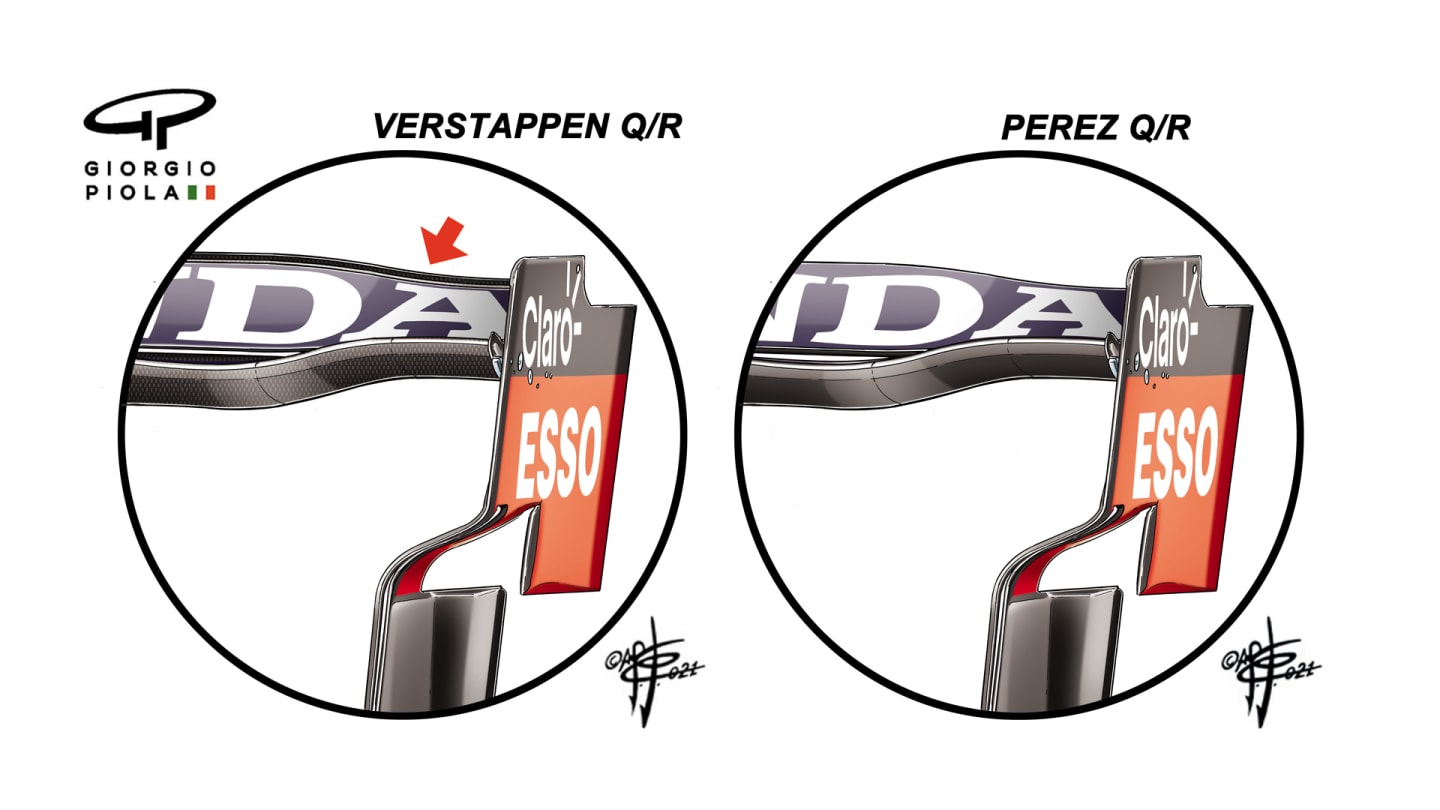
Perez's pit lane start wing (below) is a much bigger wing and of a different family to the spoon wings used by both Verstappen and Perez up to that point, in this image. Verstappen’s was fitted with a gurney strip for qualifying, Perez’s not.
During first practice Mercedes split their choices, with Valtteri Bottas running the lower-downforce of the Mercedes choices and Lewis Hamilton the higher (below). This session was held in pretty much dry conditions and Hamilton felt that the bigger wing made him too slow on the straights.
For FP2 on Friday afternoon – another session mainly dry enough for slicks – both Mercs ran with the lower downforce of their two wing choices. With this wing fitted the Mercs were reaching 326/327km/h by the end of the Les Combes straight (and 332 when the power unit was run in its more powerful setting).
Red Bull chose the higher of their two wing choices for both Friday practices. With this wing fitted it was reaching 321-322 km/h by the end of that same straight, i.e. around 5km/h slower than Mercedes.
1 / 2
For FP3 on Saturday morning the track was wet throughout and run mainly on intermediate tyres. Mercedes reverted to the higher-downforce wing (as used by Hamilton in FP1) for both cars. Red Bull, surprisingly, tried out their lower wing with its extremely low-angle flap and smaller main plane. With these respective wings (i.e. the opposing extremes, with the Merc on the higher of what is already an intrinsically a higher downforce wing and Red Bull the lower of an intrinsically lower downforce wing) the end-of-straight speeds were as follows: Mercedes 319 km/h, Red Bull 318 km/h.
With the cars in those respective trims Verstappen headed the times, but he did so when the track was in a better state than when the Mercs set their best times. So the picture was still very muddied – and the two teams were monitoring each other very closely, as the choices of one would potentially impact heavily upon the other.
With the weather forecasts insisting heavy, unremitting rain for Sunday and the wing choices having to be made before qualifying, both teams ended up going for the higher downforce of their available choices. In addition, Mercedes ran a gurney flap on the trailing edge of their wing, to give an extra edge of downforce. Red Bull reverted to the wing they had used on Friday.
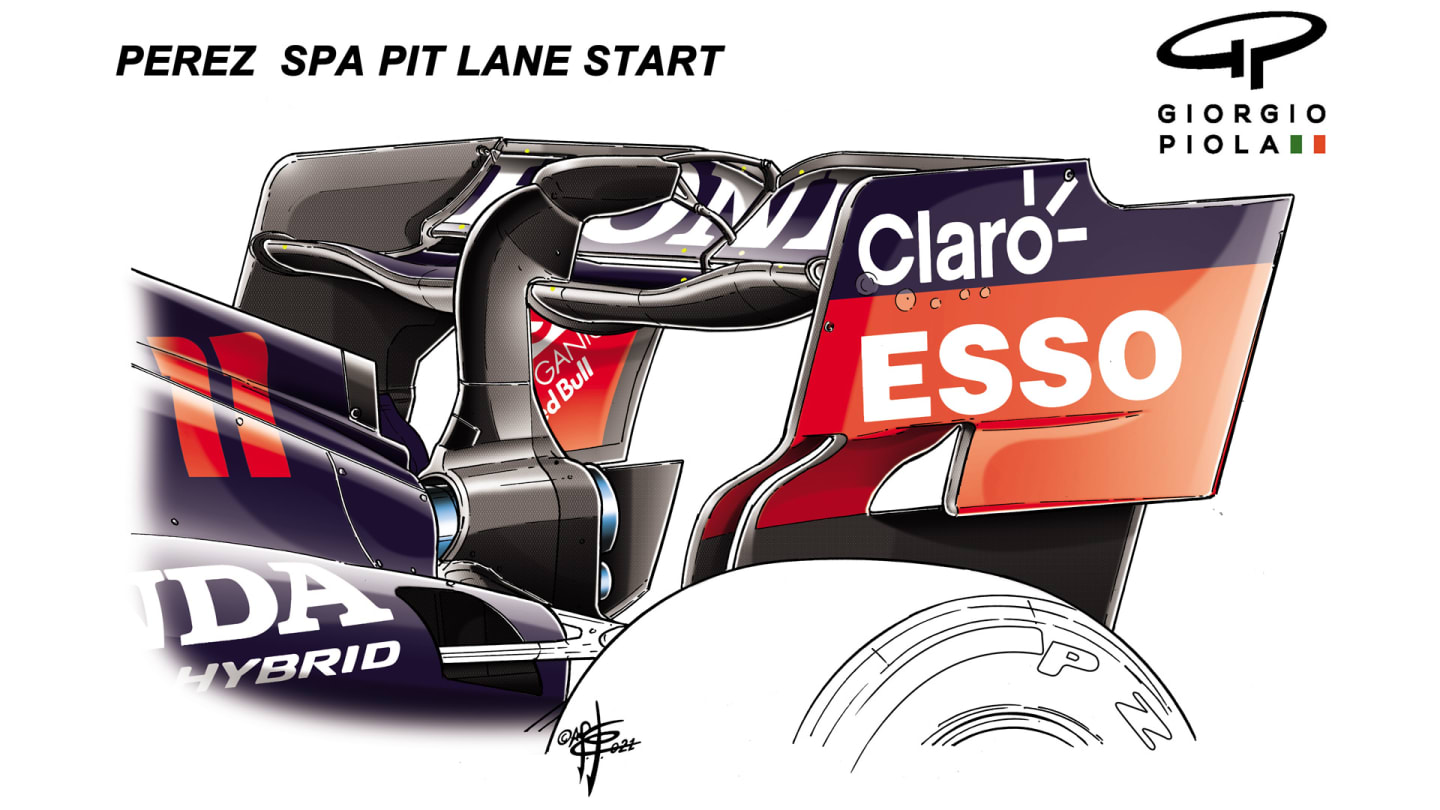
This is the conventional wing that was fitted to Sergio Perez’s car after it was repaired from his lap to the grid accident and he was able to start from the pitlane.
Conditions varied between inters and full wet in qualifying and the track was at its best in Q2. Valtteri Bottas got a great tow to set the fastest speed at the end of the straight, so his 320km/h there needs to be taken out of the equation in the comparisons. More representative was Hamilton’s 313.5km/h and Verstappen’s 310.7km/h.
These speeds are lower than in the morning session simply because the cars were entering the straight so much slower because of the wetter conditions making a much bigger lift through Eau Rouge necessary.
QUALIFYING: Verstappen denies Russell shock pole in dramatic wet qualifying session at Spa
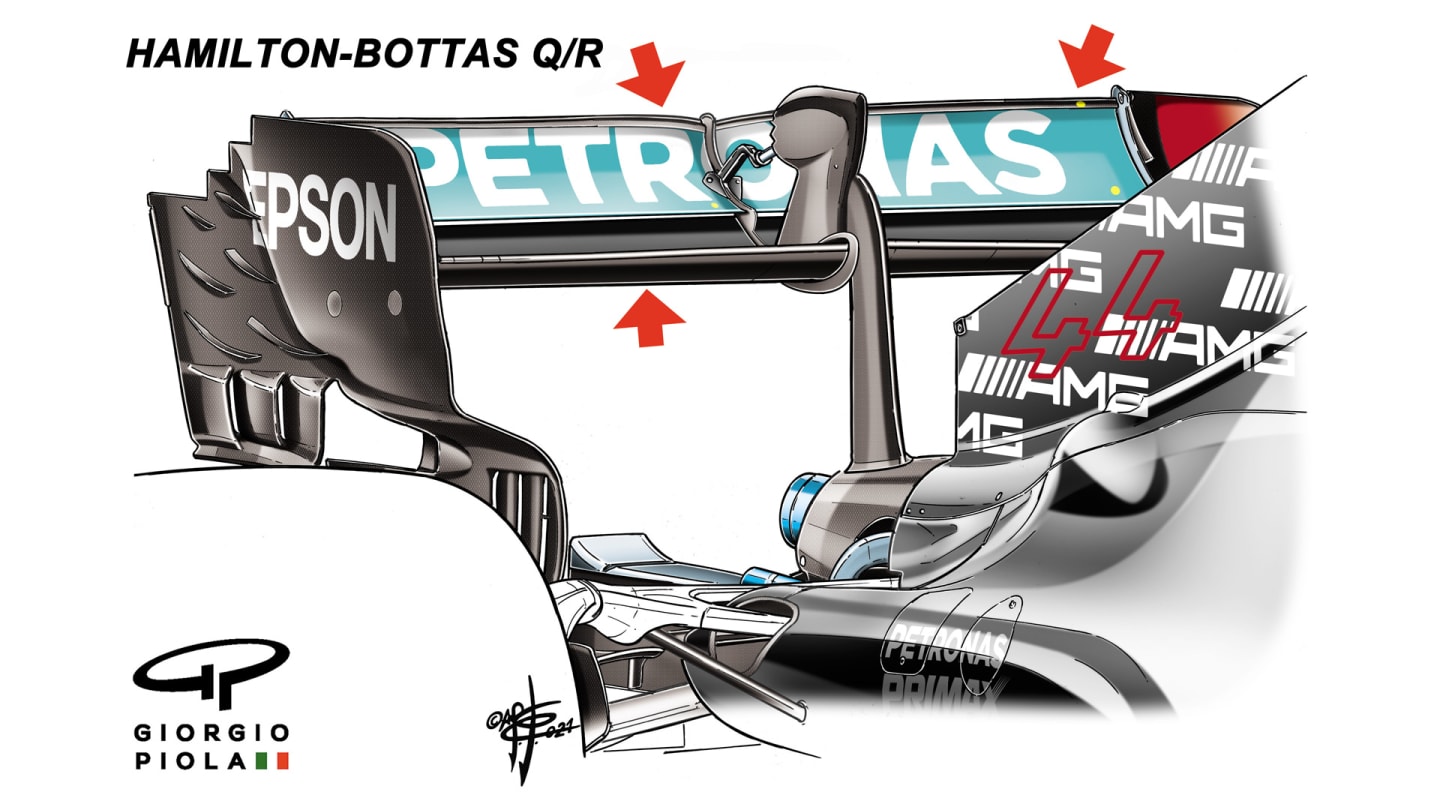
The wing chosen for both Mercs for qualifying/race was essentially that used by Hamilton in FP1 but with less of a vee in the flap’s trailing edge behind the central pillar and a gurney flap fitted to that trailing edge.
In the comparison between the two cars in how much speed was gained between the beginning of the straight (at the top of the hill out of Raidillon) and the end of it, we see that the Red Bull gains 9.6km/h, Hamilton’s Mercedes only 5.9km/h. It all implies that with both teams running the bigger of their wings, the Red Bull was running with less drag than the Mercedes (even though it’s intrinsically a draggier car in concept) because of that much smaller main plane area. Verstappen was 6.5km/h slower than Hamilton out of the Eau Rouge/Raidillon complex but only 2.8km/h slower at the end of the straight.
That Verstappen was still able to dominate the curves of sector two (helping him to pole, 0.3s faster than the Mercs) says everything about both his own performance and the underbody downforce of the Red Bull. George Russell’s Williams, incidentally, was running the medium of the team’s three wing choices and his speed gain between Radillon and the end of the straight of 7.2km/h implies a drag level somewhere in between that of the Mercedes and Red Bull on the day.
TREMAYNE: After Russell stole the show at Spa, can there be any doubt he’s ready for next step?
YOU MIGHT ALSO LIKE
News Ocon hoping Haas can ‘get back where we belong’ in Canada as Bearman admits Spain ‘exposed a few weaknesses’
News Horner and Wolff share their views on controversial Verstappen/Russell clash at end of Spanish GP
News Aston Martin's Krack provides more background on Stroll’s injury with ‘Plan A’ for Canadian to race on home soil
News Santander launch global free education campaign inspired by Formula 1
